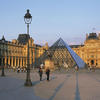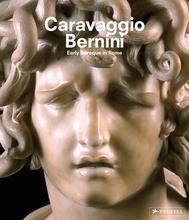More about Bust of Cardinal Richelieu
- All
- Info
- Shop

Sr. Contributor
Cardinal Richelieu was an impressive man, but he was rather unimpressed by this bust’s depiction of him.
Perhaps you know Cardinal Richelieu as the villian from The Three Musketeers or as the man credited with solidifying the power of the French monarchy. Or if you’ve never heard of him but are familiar with Game of Thrones-- he’s basically Tywin Lannister with Varys’ network of spies and his life was full of just as much political intrigue.
It was likely the high profile he built for himself that granted him permission to commission Bernini for this bust. At the time, Bernini worked exclusively for Cardinal Antonio Barberini and Pope Urban VIII who were rather possessive of the artist’s time. During the decades of this arrangement, only King Charles I of England and Richelieu received special permission to have a bust made.
Originally, Richelieu tried to push for having a full statue made, but Bernini was unable to commit the amount of time required for such an undertaking. Bernini sculpted the bust based off of Richelieu’s portraits while working in Rome. When he delivered the bust in Paris, he was thanked and paid handsomely for his work...but ultimately Richelieu was glad he didn’t push for the full statue.
Though the bust was done beautifully with Bernini’s signature style being apparent in the smooth folds of his clothing, it didn’t look like Richelieu. Or at least, Richelieu didn’t think the likeness accurate enough, because he went on to commission a different artist for a second bust.
As you expect from someone who had themselves immortalized in a work of classic fiction, the details of Cardinal Richelieu’s life are fascinating. He was first brought into the French court by regent Marie d’Medici. The Medici family themselves were rather infamous, Queen Catherine d’Medici was credited with being the cause of a real life Red Wedding for example. Another well known member of their family was Pope Leo X who also had a rather controversial reputation.
Marie d’Medici’s regency ended when her son chose to shoot her lover on the gates of the Lourve. Despite the unpopular public opinion of anyone still associated with her regency, Richelieu managed to hold onto his station and rose up to be Louis XIII’s chief minister for decades.
At the time, the king didn’t hold much power in France. The aristocracy was divided and many had their own aims to conspire for power instead of submitting to the monarchy. With the unruly nobels, multiple potential wars, and possible conspiracies, Richelieu had much to contend with and his spies likely saw very little vacation time.
Still, he succeeded in strengthening the French monarchy by suppressing the power of the nobility and paved the way for the reign of the Sun King Louis XIV.
Sources
- Bergin, Joseph. Cardinal Richelieu: Power and the Pursuit of Wealth. New Haven, CT: Yale University Press, 1990.
- Blanchard, Jean-Vincent. Eminence: Richelieu and the Rise of France. New York: Walker & Company, 2013.
- Haskell, Francis. Patrons and Painters: a Study in the Relations between Italian Art and Society in the Age of the Baroque. New Haven: Yale University Press, 1980.
- “Work Cardinal De Richelieu (1585-1642).” Cardinal de Richelieu (1585-1642) | Louvre Museum | Paris, n.d. https://www.louvre.fr/en/oeuvre-notices/cardinal-de-richelieu-1585 -1642.
Featured Content
Here is what Wikipedia says about Bust of Cardinal Richelieu
The Bust of Cardinal Richelieu is a marble sculpture by the Italian sculptor Gian Lorenzo Bernini, situated at the Louvre in Paris.
Richelieu had hoped to commission Bernini to make a full-length sculpture, through his friend Jules Mazarin and the French ambassador in Rome François Annibal d'Estrées, but Pope Urban VIII would not permit it, so the sculpture became a bust, sculpted by Bernini between November 1640 and January 1641. He worked from images of Cardinal Richelieu that had been sent to Rome from France.
Once completed, the bust was transported to Paris.
The bust arrived in Paris in August 1640, but Richelieu was not happy with the work, quickly commissioning another bust by Jean Warin.
Check out the full Wikipedia article about Bust of Cardinal Richelieu














